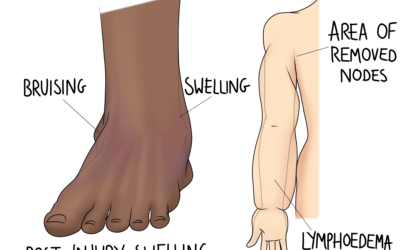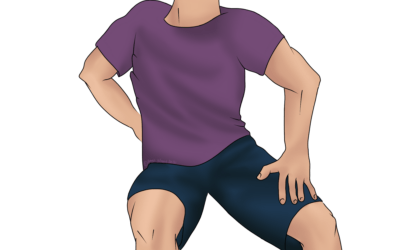Most of the exercises we prescribe are tailored for a specific patient and their condition. But breathing exercises are for almost everyone, at any time. It’s easy to dismiss breathing as “fine”, after all, you’re still here! But there’s always room for improvement. More efficient breathing means more oxygen for the brain, muscles, and other organs. It also means less work for the smaller muscles around the shoulders and upper back that assist with respiration.
Breathing exercises are particularly useful for people with aches and pains, high stress levels, and even high blood pressure. They’re also a good idea for those who want to improve their core strength or stability.
Diaphragmatic Breathing
As explained in the previous post, effective breathing depends on the diaphragm working properly. To reiterate, the diaphragm is a sheet of muscle that sits under the lungs, connecting to the ribs. It moves like a parachute, creating negative and positive pressure in the chest. This causes the lungs to inflate and deflate.
Diaphragmatic breathing also helps to maintain pressure within the abdomen, helping to contribute to a stronger posture.
Exercise for Diaphragmatic Breathing
As the diaphragm is a muscle, it can be strengthened with exercise. This is easiest performed laying on your back. This position has the benefit of integrating the exercise into your daily routine either when you go to bed or before you get up.
- Lay on your back with your knees bent and feet planted. Rest one hand on your chest and the other on your belly button.
- Take a slow, deep breath in, and feel how much each hand is moving. Slowly let the breath out.
- On the next breath, aim for more movement to come through the abdominal hand, and less through the chest hand. Slowly breathe out.
- Repeat for as long as you like, each time refining the abdominal movement.
Box Breathing
An easy exercise to incorporate into your daily routine is “box” or “square” breathing. The name comes from the even cycle of breaths that could be illustrated as four sides of a square:
- breathing in
- holding it
- breathing out
- holding it
The square can become a rectangle if you want to hold your breaths for longer, which can be good for calming down in stressful situations.
Box breathing can be upgraded to focus on diaphragmatic breathing. Lay on your back, with your legs flat or bent. Place your hands on your tummy, with your fingers from either hand just meeting in the centre of your tummy. Aim your breath down to your fingers, allowing your breathing to part your fingers. The separation will only be subtle, but it is a good indicator that the diaphragm is moving.
Breathing Exercises for Stress and Mindfulness
The fight or flight response can be difficult to snap out of. Sometimes it helps to trick the nervous system responsible for it by taking control of your breathing. Forcing your breaths to be deeper and slower reduces the heightened arousal of that part of the nervous system. One way you could do this is:
- Sit tall, with or without back support
- Close your eyes, and take a deep breath in through your nose over the count of three
- Hold the breath for two seconds, using the time to relax your shoulders
- Breathe out slowly through your mouth over at least three seconds.
Repeat this, focusing on relaxing one area per breath. You can target:
- your jaw (making sure you’re not clenching it)
- your hands (you could place them palm up on your thighs)
- your hips and thighs
- your calves (are your feet resting gently on the floor?)
The relaxing phase lends itself to mindfulness practice. Perform the exercise as above, but aim to clear your mind of everything except the breathing and relaxing. Allow thoughts that come to drift away, and keep your rhythm going for as long as you are comfortable to.
Osteopathy and Breathing
If you have problems with these exercises, or feel like your breathing isn’t coming from the diaphragm, your osteopath can help. We are qualified to manage the effects of tension, whether the problem is the diaphragm itself or something further afield.
You may find that your altered breathing is associated with tension in the upper back and neck. These can contribute to nerve irritation in the arm, which can be mistaken for carpal tunnel syndrome and therefore managed ineffectively without a proper assessment. This same tension can also cause headaches as the muscles at the top of the neck are put under tension.
At your appointment you can expect a detailed assessment to cover your health history and see how your body moves. This allows us to piece the whole puzzle together and address the root cause.
Click here to make an appointment to address your aches and pains in Leeds



0 Comments